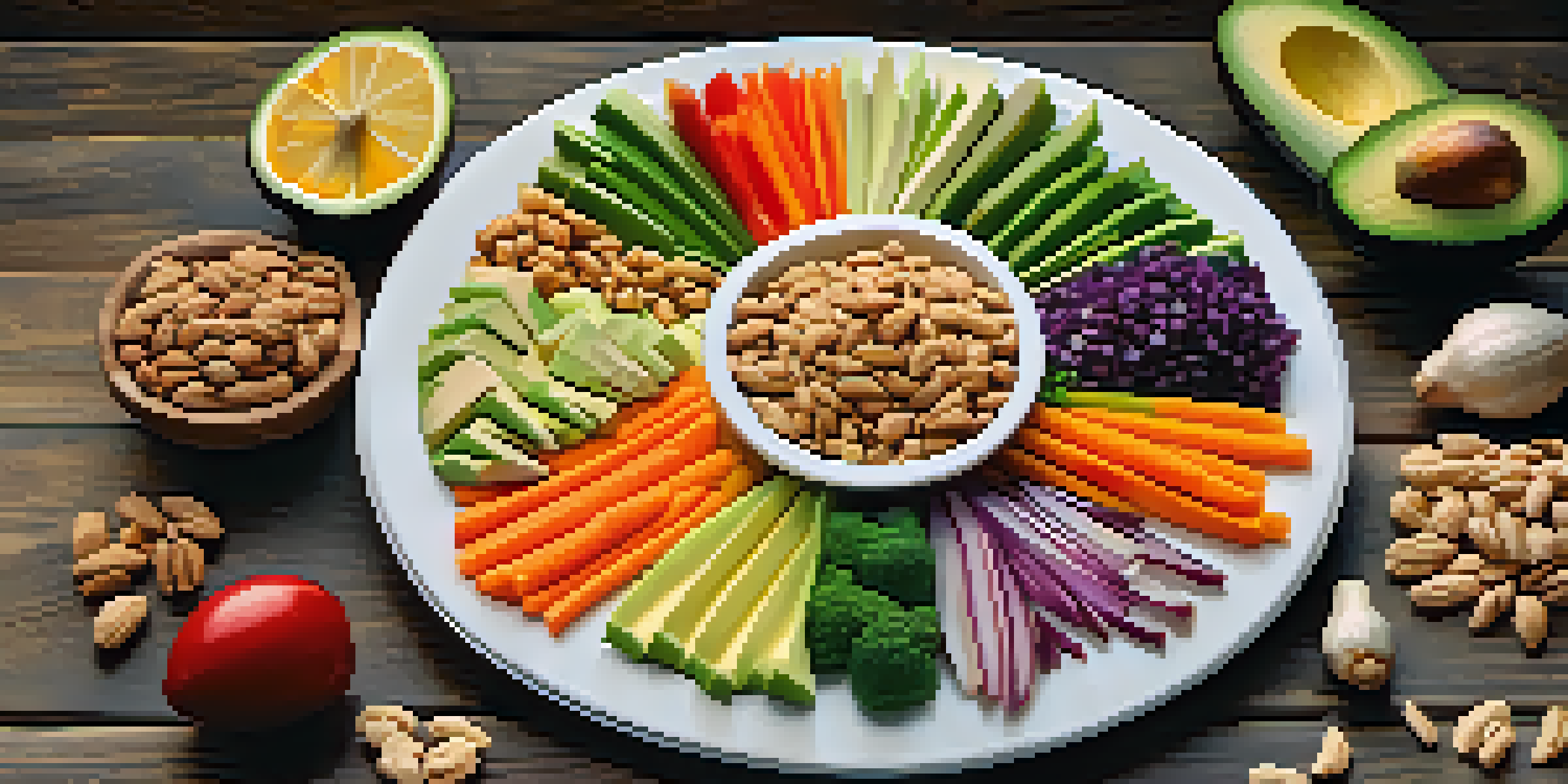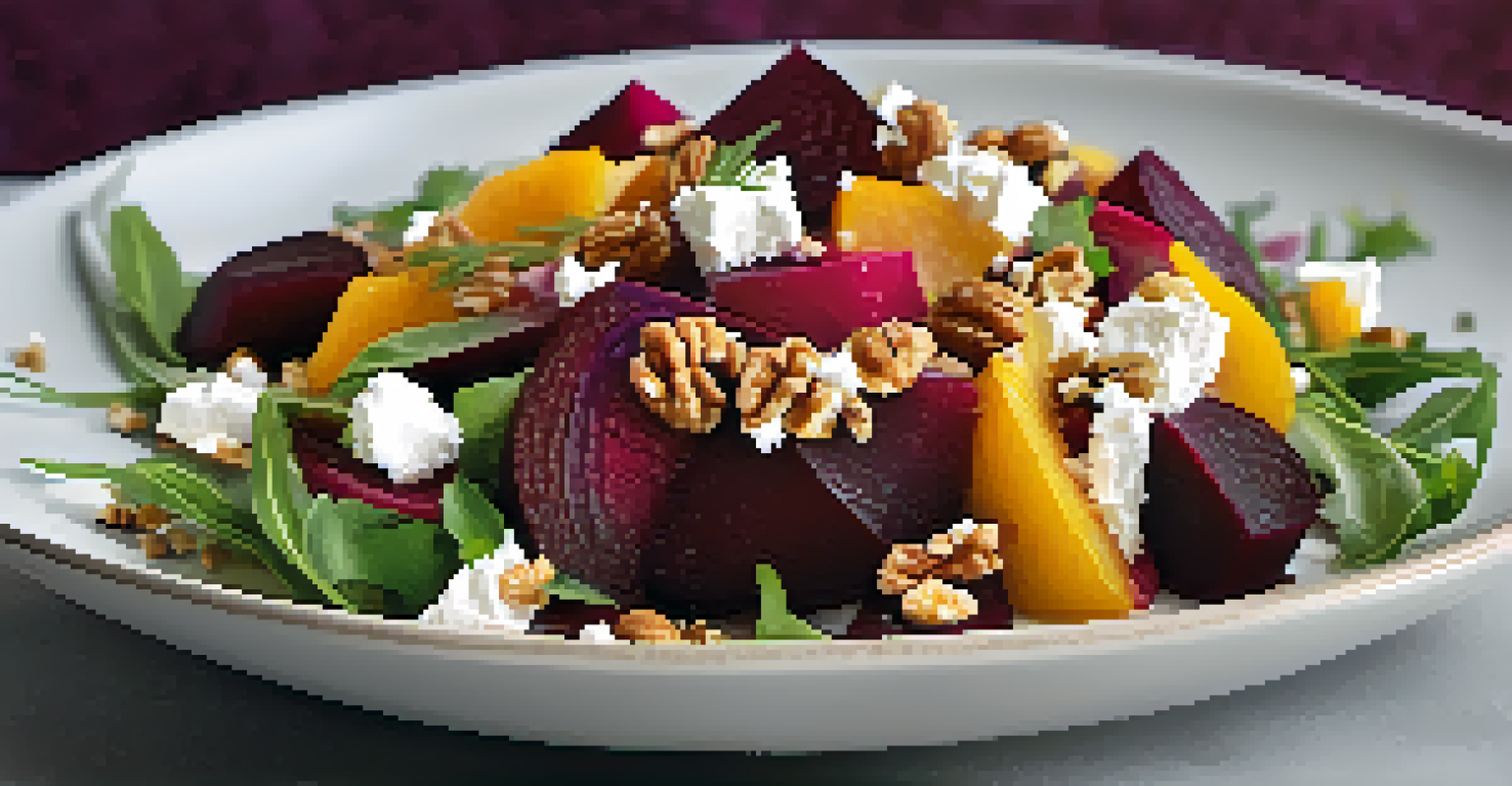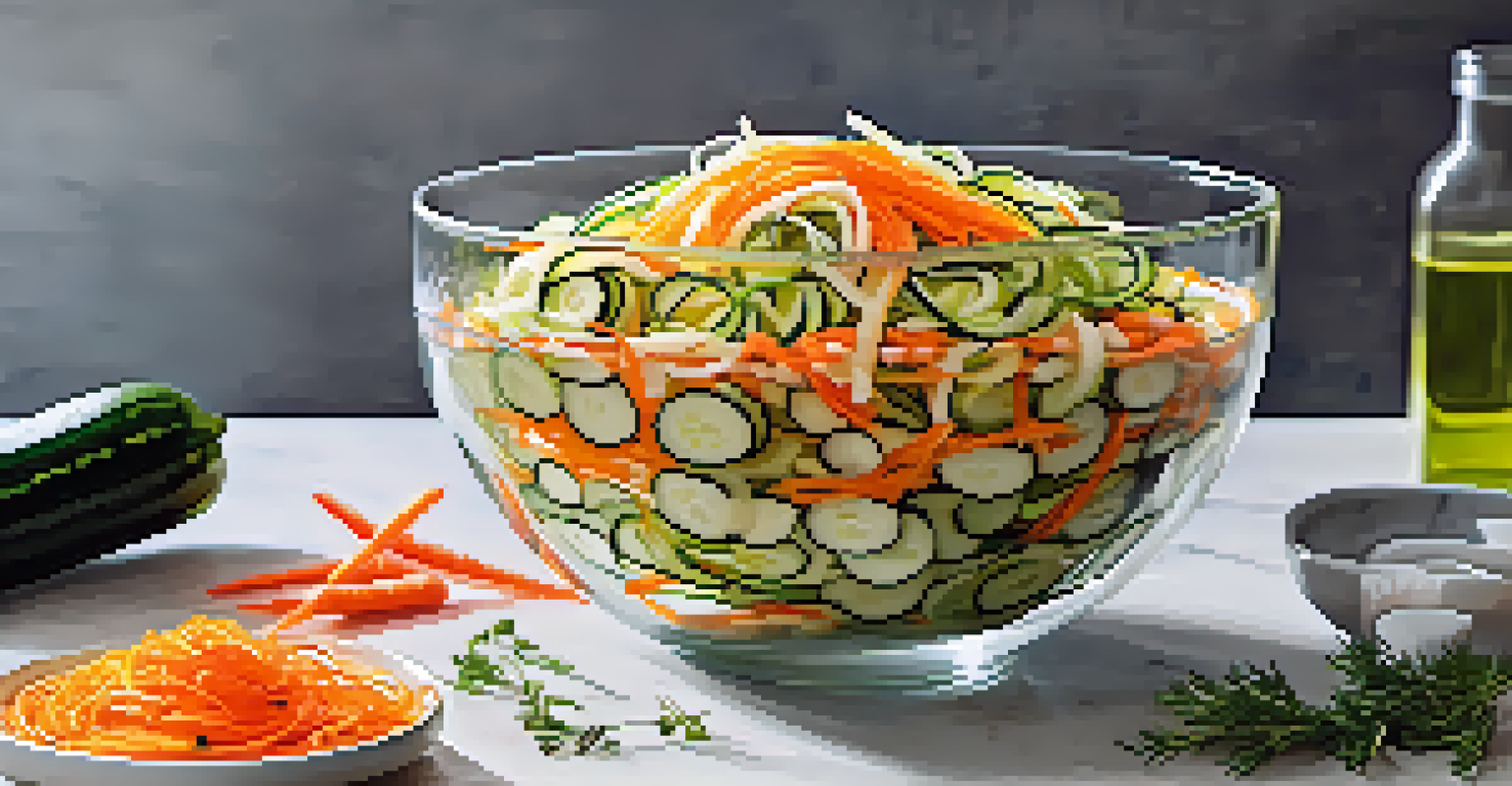Textures in Raw Food: Creating Visual Interest on the Plate

Understanding the Role of Texture in Raw Food Presentation
Texture plays a crucial role in how we perceive food, especially in raw cuisine. It adds depth and complexity to dishes, making them visually appealing and inviting. Think about the crunch of fresh vegetables juxtaposed with the smoothness of a creamy avocado dressing; it creates an engaging experience for the diner.
Food is not just what we eat; it's an experience that engages all our senses.
Not only does texture enhance visual interest, but it also impacts taste and mouthfeel. When you bite into a dish, the combination of different textures can elevate the flavors and make the meal more satisfying. This interplay between textures can transform a simple salad into a culinary adventure.
In raw food preparation, utilizing a variety of textures encourages creativity and experimentation. Chefs can mix and match ingredients to create a symphony of sensations, ensuring each bite is unique. By understanding the importance of texture, you can elevate your raw food dishes to new heights.
Layering Textures for a Balanced Raw Food Dish
Creating a well-balanced raw food dish involves layering various textures that complement each other. For instance, a salad can feature crunchy nuts, soft avocado, and chewy sun-dried tomatoes to provide a delightful contrast. This layering not only makes the dish more visually appealing but also ensures a satisfying eating experience.

When layering textures, consider how each ingredient interacts with the others. You might pair crisp cucumber slices with creamy hummus or crunchy seeds sprinkled over a silky smoothie bowl. This thoughtful combination can transform a simple plate into an artful masterpiece.
Texture Enhances Raw Food Experience
The variety of textures in raw food dishes elevates flavor and makes the dining experience more engaging.
Remember, balance is key. Too many similar textures can make the dish feel monotonous, while contrasting textures keep the palate intrigued. Experimenting with different ingredients allows for endless possibilities in creating a vibrant raw food platter.
Incorporating Color and Texture for Visual Appeal
Color and texture work hand-in-hand to create visually stunning raw food dishes. Bright, colorful ingredients naturally draw the eye, while varied textures invite exploration. Imagine a vibrant beet salad topped with crunchy walnuts and creamy goat cheese; not only does it look appealing, but the textures enhance the overall experience.
The beauty of food is not just in its taste, but in its presentation and the textures it offers.
Using a variety of colors can also signify different textures. For example, dark leafy greens can be paired with bright orange carrots and creamy avocado to create a rainbow effect on the plate. This not only boosts visual interest but also indicates a range of flavors and textures waiting to be discovered.
Don't be afraid to get creative with your presentation! Arrange food in a way that highlights both its color and texture. A simple drizzle of sauce can add a glossy finish, while a sprinkle of seeds can introduce a crunchy element, making the dish irresistible.
Textures and Seasonal Ingredients: A Perfect Match
Seasonal ingredients offer a fantastic way to explore different textures in raw food. Fresh produce at its peak ripeness tends to have the best flavors and textures, enhancing your dishes' overall quality. For example, ripe tomatoes in summer provide juiciness, while winter squash offers a firmer texture that can be showcased in various ways.
By using seasonal ingredients, you not only support local farmers but also introduce your palate to a diverse range of textures throughout the year. Think about incorporating crunchy apples in the fall or juicy berries in the summer to keep your raw food creations fresh and exciting.
Layering Textures for Balance
Combining different textures in a dish creates visual appeal and keeps the palate intrigued.
Additionally, embracing seasonality encourages mindful eating. It allows you to appreciate the natural variations in texture and flavor that come with each season, making every meal a celebration of nature's bounty.
Textural Techniques: Shredding, Slicing, and More
The way you prepare ingredients significantly influences their texture. Techniques like shredding, slicing, or spiralizing can transform ordinary vegetables into exciting components of a raw dish. For instance, shredded carrots can add a delicate crunch, while spiralized zucchini can mimic pasta, providing a fun twist to your meals.
Experimenting with different cutting methods can introduce varying textures within a single dish. Try mixing sliced radishes with diced cucumbers for a salad that features both crunch and juiciness. This not only enhances the visual appeal but also keeps the eating experience lively and enjoyable.
Don't hesitate to invest in kitchen tools that can help you achieve these textural variations. A good mandoline or spiralizer can open up a world of possibilities, allowing you to be adventurous with your raw food creations.
Serving Ideas to Highlight Textures on the Plate
How you serve your raw food can greatly impact its perceived texture. Consider using unique serving dishes that showcase the colors and textures of your ingredients. A shallow bowl, for instance, can emphasize the beautiful layers of a raw vegetable tartare, inviting diners to dive in.
You can also play with height and arrangement to create visual interest. Stacking ingredients or arranging them in a fan shape can add an element of surprise and excitement to the plate. This attention to presentation encourages diners to appreciate the textures and flavors before even taking a bite.
Seasonal Ingredients Showcase Texture
Using seasonal produce introduces diverse textures, enhancing the quality and enjoyment of raw food dishes.
Additionally, garnishes can enhance both texture and visual appeal. A sprinkle of crunchy seeds or a drizzle of vibrant sauce can elevate the dish, making it not only more appetizing but also more enjoyable to eat.
The Impact of Texture on Raw Food Enjoyment
Ultimately, the texture of raw food significantly impacts the overall dining experience. A meal that offers a variety of textures can engage the senses and make eating more enjoyable. Diners are more likely to savor each bite when they encounter different sensations, from crunchiness to creaminess.
Incorporating diverse textures can also lead to increased satisfaction. When dishes are thoughtfully prepared to include a mix of textures, it keeps the palate excited and encourages mindful eating. This can transform a simple meal into a memorable experience.

Thus, as you explore the world of raw food, consider how textures can enhance your dishes. By focusing on this aspect, you not only create beautiful plates but also elevate the entire dining experience, leaving a lasting impression on your guests.